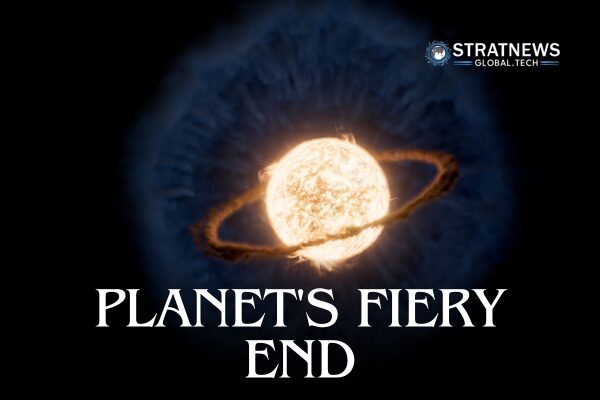A Distant Planet Spiralled Into Its Star in a Fiery End
In a remarkable observation, astronomers witnessed a planet being devoured by its host star—marking the first time such an event has ever been seen. Initially, scientists believed the star expanded into a red giant, engulfing the planet in its path. But new data from the James Webb Space Telescope paints a different picture.
A Shift in Understanding
The James Webb Space Telescope, which became operational in 2022, offered fresh insights into this cosmic event. Instead of the star expanding and swallowing the planet, researchers now believe the planet’s orbit gradually decayed. Over time, it spiralled inward, eventually crashing into the star in a dramatic plunge.
This shift in perspective changes how astronomers view the life cycle of planetary systems. It appears that the planet moved towards the star—not the other way around.
Webb Telescope detects Evidence of a Violent Demise
The Webb Telescope detected hot gas forming a ring around the star and a surrounding cloud of cooler dust. These materials are the remnants of the planet’s final moments. Ryan Lau of the US National Science Foundation’s NOIRLab, who led the study, explained that this dusty material was likely ejected as the planet fell into the star.
The star in question lies 12,000 light-years away in the constellation Aquila. It is slightly redder and dimmer than our sun, with around 70% of the sun’s mass.
The doomed planet is thought to have been a “hot Jupiter”—a type of giant gas planet with a very tight orbit, resulting in high surface temperatures. According to researcher Morgan MacLeod of the Harvard-Smithsonian Center for Astrophysics, the planet must have been several times the mass of Jupiter to cause such dramatic effects.
The Final Plunge
As the planet’s orbit decayed, it began to skim the star’s outer atmosphere. This caused resistance, much like a headwind, which further slowed the planet and pulled it in faster. As it descended, the planet shed its gaseous layers and heated the star’s gas, which was then ejected into space.
Although astronomers have a good understanding of the aftermath, the precise events remain uncertain. “We can’t run a lab experiment smashing a planet into a star,” said MacLeod. “But we can model what likely happened using computers.”
Webb Telescope Discovers Planetary Orbits Decay Often
The fate of this distant planet is not a direct threat to Earth, but it does offer a glimpse into a possible future. Scientists believe that none of the planets in our solar system currently orbit close enough to the sun for such a plunge. However, about five billion years from now, the sun will expand into a red giant. When that happens, Mercury, Venus, and possibly Earth could be consumed.
These new observations suggest that planetary orbits might decay more often than stars expanding to consume them. Still, the solar system appears stable for now, giving Earth a lengthy stay of execution.
with inputs from Reuters



